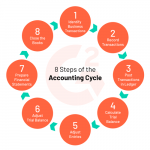Capital Expenditure: Spending Money to Make Money

Explore Capital Expenditure (CapEx) – its meaning, significance, and difference from operational expenditure. Learn how CapEx shifts perspective from an expense to an investment, propelling business growth. The first step in efficient capital expenditure budgeting is to have a clear and concise plan. The company must determine if the benefits of the new system would outweigh its costs after taking into account factors such as depreciation. These are fixed, tangible assets utilized by businesses to generate revenue and profit. This may include land, buildings, vehicles, furniture, office equipment, machinery, and franchise rights.
In cases where a company has purchased intangible assets as part of its capital expenditures, the formula may be modified to include both depreciation and amortization. Costs that are related to future revenues, such as buildings, patents, or machines, are typically considered capital expenditures. Unlike operating expenses (OpEx), capital expenditures are not recorded in full during the period in which they were incurred. In the direct approach, an analyst must add up all of the individual items that make up the total expenditures, using a schedule or accounting software. In the indirect approach, the value can be inferred by looking at the value of assets on the balance sheet in conjunction with depreciation expense.
CapEx and financial statements
Thus, they should be given the opportunity to provide input on capital expenditure budgeting. It is not guaranteed that a company will achieve the expected results from its capital expenditures. Most assets acquired under capital expenditure cannot be easily reversed without incurring some loss for the business. Depreciation and amortization are done because the value of most capital expenditures decreases over time, mostly through wear and tear.
For something to be classified as a capital expenditure, there has to be a quality of permanency to it. Most businesses have a capitalization limit to decide if a purchase counts as a fixed asset. Whenever expenses exceed the capitalization limit, it’s recorded as a capital expenditure. For example, a company purchases machinery worth $40,000, and records it in the asset account of the balance sheet. As the machine ages, its value starts declining which is measured by the depreciation.
CapEx on the Balance Sheet
If the benefit is less than one year, it will be expensed directly on the income statement. If the benefit is greater than one year, it must be capitalized as an asset on the balance sheet. OpEx (operating expenses) refer to the everyday expenses a business incurs throughout standard operation. Useful life guidelines are established by the IRS and are incredibly important to understand when considering capital expenditures. Without a full picture of the useful life of assets being invested in, you could lose out on some fairly significant tax advantages.
- By reinvesting funds back into the business, companies are able to acquire new assets, improve existing ones, and expand their operations.
- So, capital expenditures are investments into these long-term assets with a “useful life” of more than one taxable year.
- For example, the freight, the excise duty, and the installation fee add to the cost of the machinery.
- They’re considered capital assets since they can be sold when such a need arises.
- You can also calculate capital expenditures by using data from a company’s income statement and balance sheet.
- The asset’s cost (except for the cost of land) will then be allocated to depreciation expense over the useful life of the asset.
Both repairs and maintenance are considered operating expenses as their incurrence does not extend the life of the underlying asset. R&M is seen as not changing the underlying long-term value of the asset, therefore maintenance costs are almost always expensed immediately. However, if a company borrowed money for capital expenditures, it would be listed as an inflow of cash in the financing activities section and an outflow of cash in the investing activities section. CapEx stands for capital expenditures, which is money used by an organization to purchase, improve, or sustain physical assets. It makes little sense to record it as a fixed asset and have the accountants depreciate the stapler. Capital expenditures are necessary for a company to grow its current business operations.
Before the purchase of plant, property, and equipment, the stakeholders must decide on the maximum amount they can spend. The scope of the asset has to be established and the availability of funds has to be taken into account. These articles and related content is the property of The Sage Group plc or its contractors or its licensors (“Sage”).
Definition and Explanation of Capital Expenditures
By reinvesting funds back into the business, companies are able to acquire new assets, improve existing ones, and expand their operations. In this case, the renovation cost would be considered a capital expenditure, since it will increase the value of the office space and prolong its useful life. Improvements are capital expenses incurred to increase the value or prolong the useful life of long-term assets. The cost of the vehicles would be considered a capital expenditure since it is a long-term asset that will be used to generate income for the company. These are capital expenses made to acquire long-term assets that will be used in business operations. Examples of capital expenditure include purchasing or improving the property, buying new equipment or technology, and investing in research and development.
- Organizations can set up an automation workflow to approve equipment purchases similar to that designed for purchasing new laptops for the finance department.
- If the benefit is greater than one year, it must be capitalized as an asset on the balance sheet.
- Intangible CapEx assets are non-physical assets you can’t see or touch but can still provide long-term value.
- Some of the ways to do this include hurdle rates, return on investment ratios, and payback periods.
When a company acquires a vehicle to add to its fleet, the purchase is often capitalized and treated as CapEx. The cost of the vehicle is depreciated over its useful life, and the acquisition is initially recorded to the company’s balance sheet. Operating expenditures are smaller, usually more frequent purchases that support the operations of the company by secure value in the short-term.
What is the capital expenditure formula?
This is because the return on investment can be faster with a large initial expense, and it also ensures that you are getting maximum value out of your assets by using them for as long as possible. An investment in capital expenditure is an investment in the future of the business. Capital expenditure, also known as CapEx, is money a business spends to acquire, improve, or maintain physical long-term assets. Capital expenditures are used to develop a new business or as a long-term investment of an existing business. However, it may not catch all costs and relies on accurate depreciation estimates.
Extended Q+A: Unpacking building services specification News – Housing Today
Extended Q+A: Unpacking building services specification News.
Posted: Mon, 31 Jul 2023 05:07:45 GMT [source]
We will explore the concept of CapEx and why you need to consider capital expenditure as an investment rather than an expense. Capital expenditures are important for any company as they represent the investments made in the future of the business. Capital expenditures should be measured and monitored to ensure they achieve the desired results. Some of the ways to do this include hurdle rates, return on investment ratios, and payback periods. A bottom-up approach ensures that all relevant departments have a voice in the budgeting process, which increases the chances of a company’s capital resources being used efficiently.
Operating expenses, expenditures, or revenue expenses (RevEx) are necessary ongoing costs your business incurs to maintain its day-to-day operations. Tangible CapEx assets are also subject to depreciation, which means you can expense the asset’s cost over its useful life. Capital expenditures (CapEx) are funds you use to acquire, upgrade, or maintain assets that provide long-term value. These could be physical assets like property or equipment or intangible assets like patents or software. When a company uses funds to purchase these items, they are recorded as part of the total PP&E on the balance sheet.
While capital expenditures are among the most critical decisions organizations face, many struggle in accurately managing a CapEx plan. While ongoing investments tend to make companies more efficient, there’s always the risk that the purchase might not pay off, especially when dealing with a sluggish economy. An expenditure is recorded as an expense if the expenditure is for an amount less than the designated capitalization limit of a business.
How Capital Expenditures Work
The depreciation (or amortization for intangible fixed assets) is the annual amount of the fixed asset investment that was spread out over the asset’s lifetime. So, for example, if a company buys a $5,000 piece of equipment it intends to use for five years and capitalizes the cost over that five-year lifetime, the annual depreciation would be $1,000. Additionally, accountants, business owners, and a company’s financial team should all be familiar with capital expenditures for budgeting purposes. For example, the entire team needs to know how much money can be invested in new PP&E and if any existing PP&E should be sold to fund other ventures.

The purchase of a building, by contrast, would provide a benefit of more than one year and would thus be deemed a capital expenditure. Below is an example of the cash flow statement for Tesla Inc. for years ending 2019, 2020, 2021, from the company’s annual report. If you were unable to match the purchase with economic benefits, you would treat the expenditure as an expense and not as an investment. In summary, CapEx is the money an organization spends to buy, maintain, or improve its assets to increase its scope and economic performance. Because buying the machinery, equipment, and property would help the business maintain or increase its operation, we classify these transactions as CapEx.
Erika Rasure is globally-recognized as a leading consumer economics subject matter expert, researcher, and educator. She is a financial therapist and transformational coach, with a special interest in helping women learn how to invest. CapEx investments in compliance with regulatory requirements, such as environmental or safety regulations, can help you avoid fines and penalties—and protect your reputation. This transparency will make decision-making easier and boost responsibility, ensuring stakeholders understand how CapEx investments help meet your goals—even ones that aren’t easy to measure. Despite the challenges, there are steps you can take to make the most of your CapEx investments.
If you don’t invest in maintenance CapEx, you may get hit more by equipment failures and costly repairs. While maintenance CapEx doesn’t typically lead to significant improvements or new revenue streams, it could be an essential part of your business strategy. Over months and years, your new machinery and tech increases productivity, improves product quality, and reduces manufacturing time. By following these best practices and understanding the difference between CapEx and OpEx, companies can ensure that their capital resources are used efficiently and effectively. Doing so will ensure that the company’s capital resources are properly allocated and used for their intended purpose. For example, a company must weigh the pros and cons of investing in a new computer system that will have a useful life of five years.
Again, capital expenditures refer to long-term investments related to your business over a multi-year timeline. While often used interchangeably, operating expenses (OpEx) and capital expenditures (CapEx) are not exactly the same. Capital expenditure (CapEx) is money that is spent to acquire, repair, update, or improve a fixed company asset, such as a building, business, or equipment. A CapEx is different from an everyday business, which falls under the operating expense category.
Most forms of capital equipment are customized to meet specific company requirements and needs. To learn more about accounting and finance, check out our Complete Finance & Valuation Course. The notes also explain how the property, plant, and equipment balance is reduced by accumulated depreciation balance. In this example, Apple what is journal entry and how to work with it has utilized $70.3 billion of the $109.7 billion of CapEx. Now that you know what CapEx is, and are armed with an example of CapEx at a jewelry business, you might be curious how a company calculates CapEx in practice. In this simple example, the choice to buy these future economically productive assets represents CapEx.

